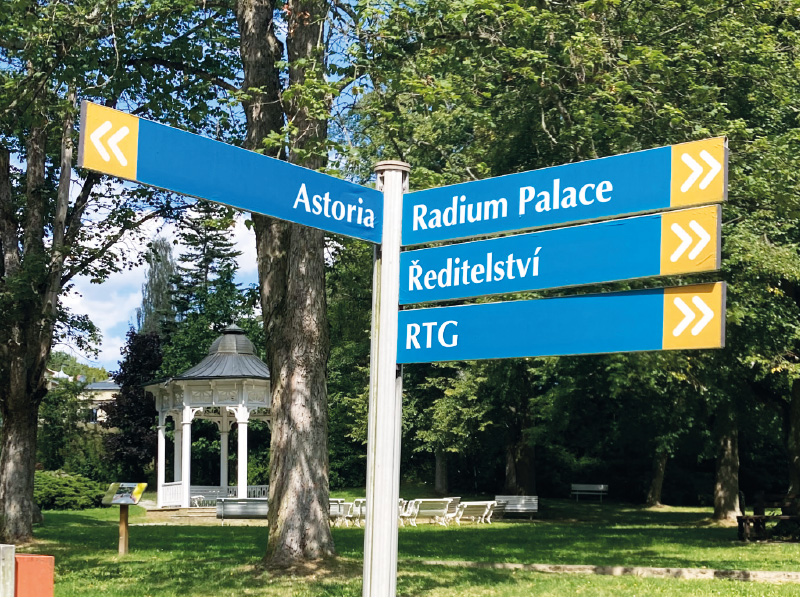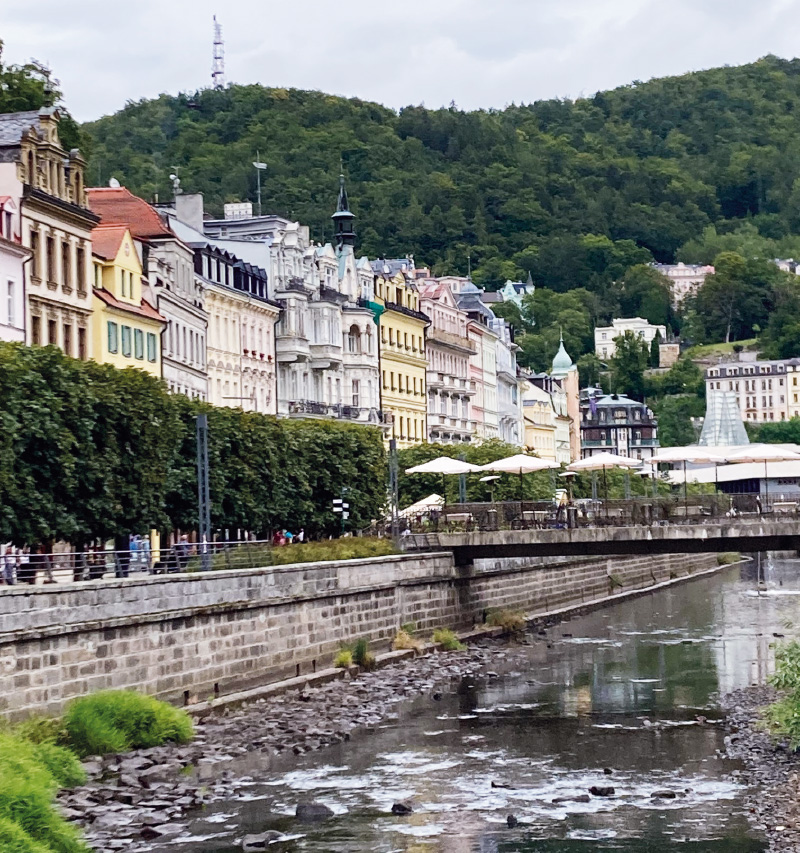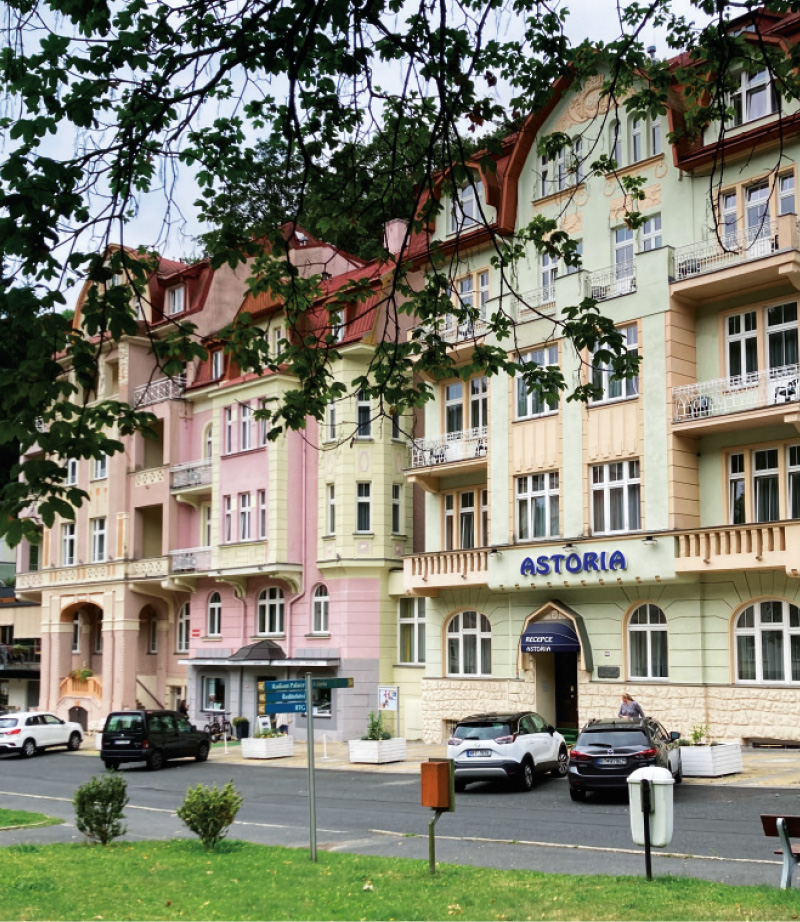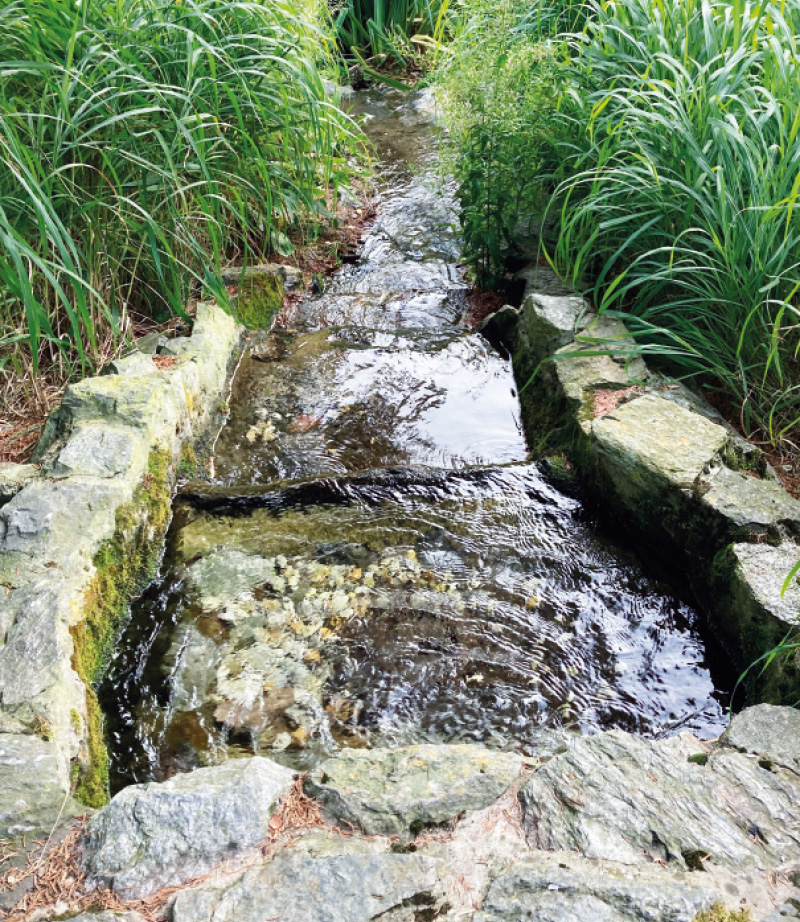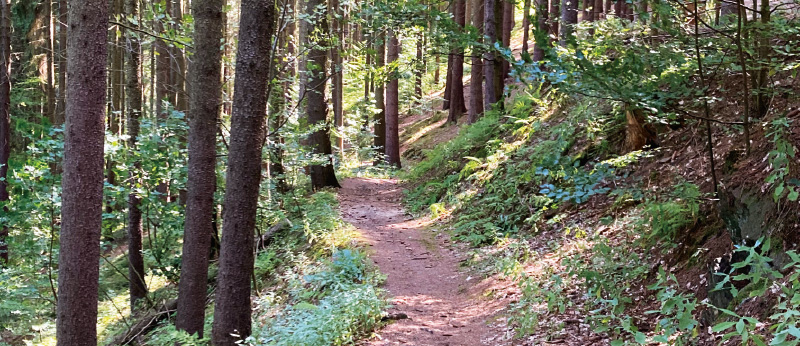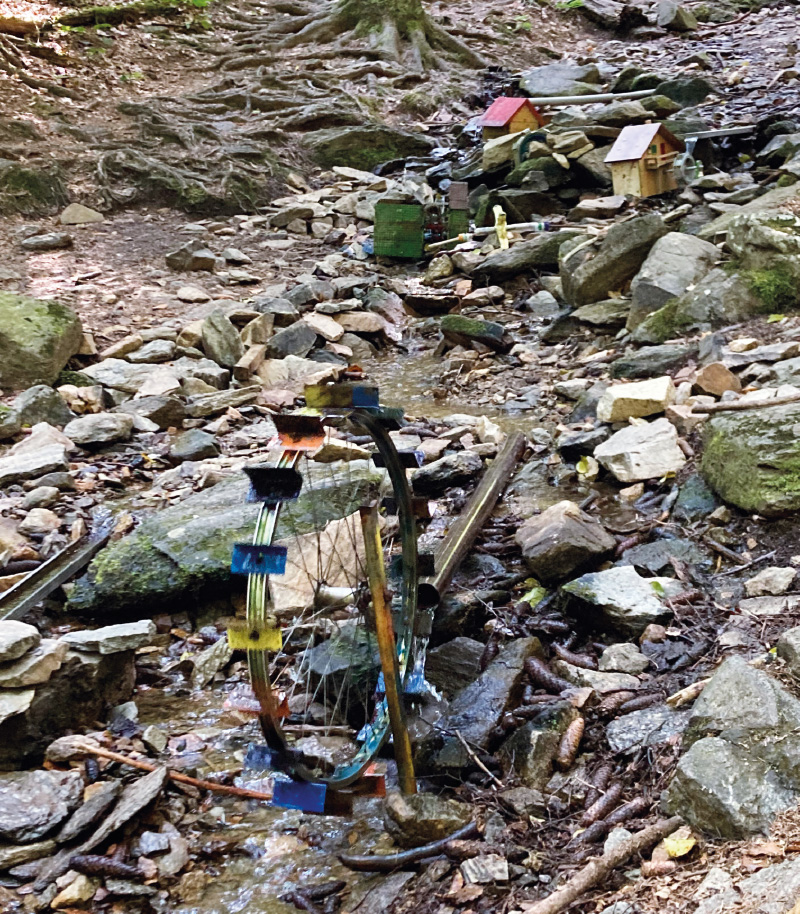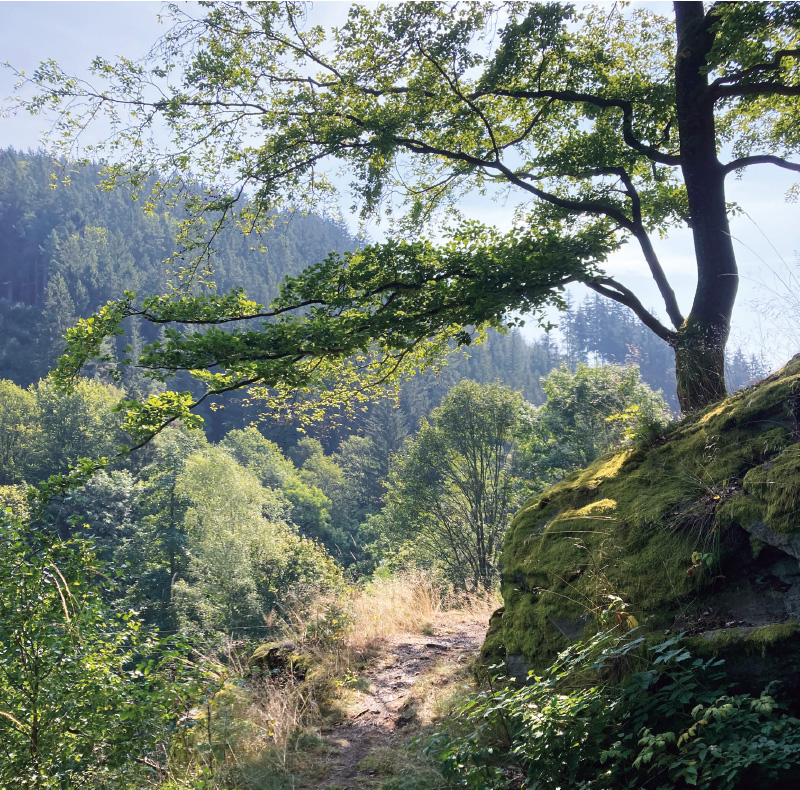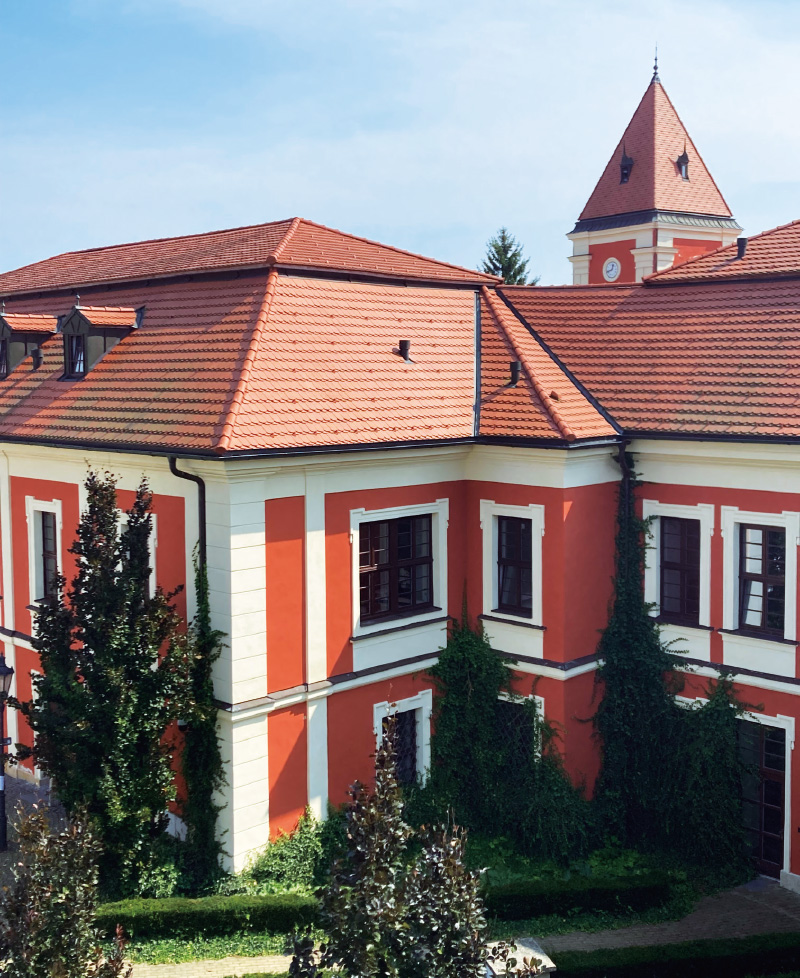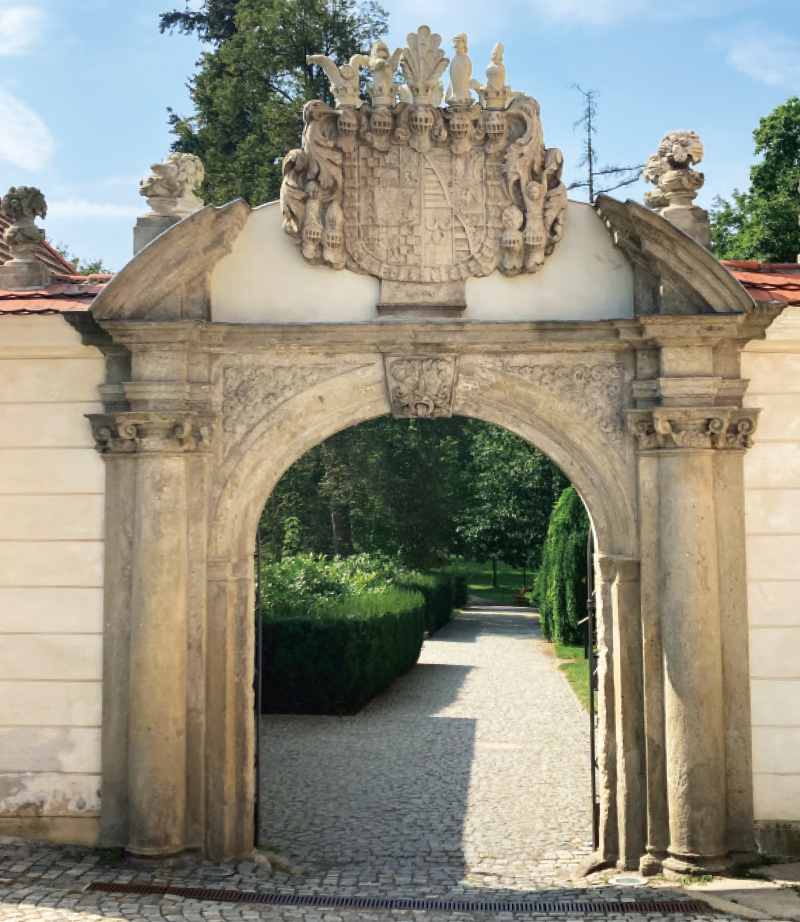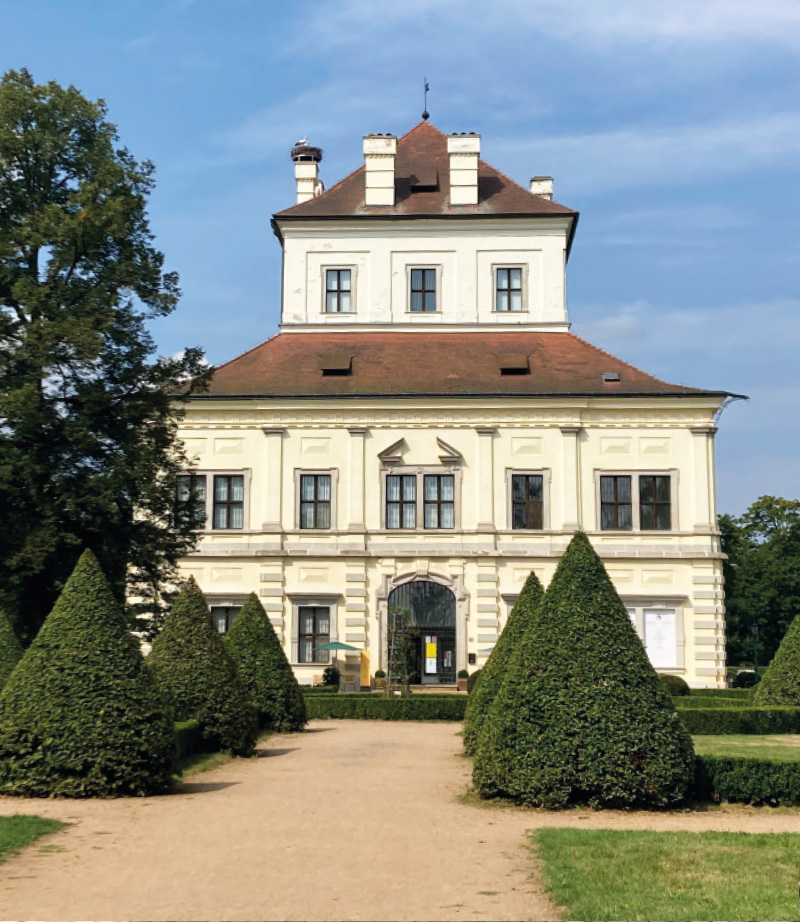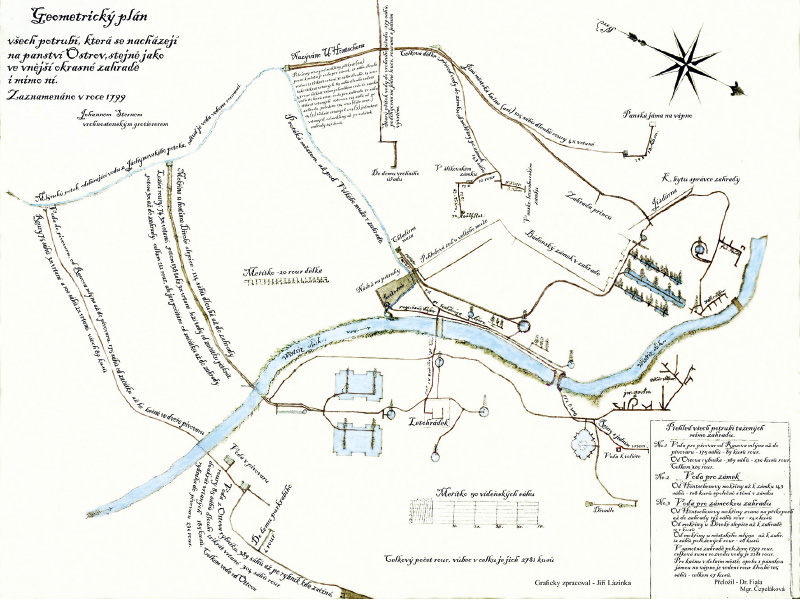WEST BOHEMIAN SPA
West Bohemia is traditionally considered an area famous primarily for its spas. And for a good reason; the number of various mineral springs and gases and the variety of their chemical composition provide ideal conditions for balneology. The number of springs reaching several hundred makes this region completely unique on a European scale. By combining not only thermal waters, high-quality medical facilities and glorious promenades, but also beautiful countryside inviting for walks and a wide range of sports activities, West Bohemian spas encourage the patients’ physical and mental healing.
The most famous of the West Bohemian spa towns are, of course, the classic trio of Karlovy Vary (Fig. 1), founded in the 14th century, Mariánské Lázně on the edge of Slavkov Forest, and the classicist Františkovy Lázně. Together with several other European spas, they were inscribed on the UNESCO World Heritage List under the title The Great Spa Towns of Europe. From their very beginnings, these three towns participated in the building and shaping of the Czech spa phenomenon, which then fundamentally influenced the history and social image of the surrounding European countries.
However, the list does not end with this famous triangle. In the vicinity there are, for example, the “climatic” Kynžvart spa or the newly reconstructed Kyselka spa. The Korunní spa, once famous for its mineral water, has unfortunately disappeared.
Fig. 1. The Teplá river in Karlovy Vary; it flows into the Ohře by Ostrovský bridge
JÁCHYMOV
Jáchymov occupies a unique place in this spa area. This historic town near Karlovy Vary is located close to the border with Germany – the border crossing at Boží Dar is within a pleasant walking distance of seven kilometres. Although Jáchymov has always been part of the Kingdom of Bohemia, most of its cultural history is connected with the German population and many German names and inscriptions remain on houses, maps, and the local cemetery to this day. The founder of the city was Count Stephan Schlick (known in Czech as Štěpán Šlik) from the famous noble family of Schlick.
The great cultural and social flourishing of Jáchymov was related to the local “silver rush” in the 16th century, when the first Lutheran church in our country was built here – the Church of St. Joachim (Fig. 2). The famous parish priest Johannes Mathesius (1504–1565), a disciple of Martin Luther, with whom he studied in Nuremberg, worked there; at that time, Jáchymov was the second most populous town in the Kingdom of Bohemia. Its historic centre, consisting of a collection of Gothic-Renaissance patrician houses, is today an urban monument zone.
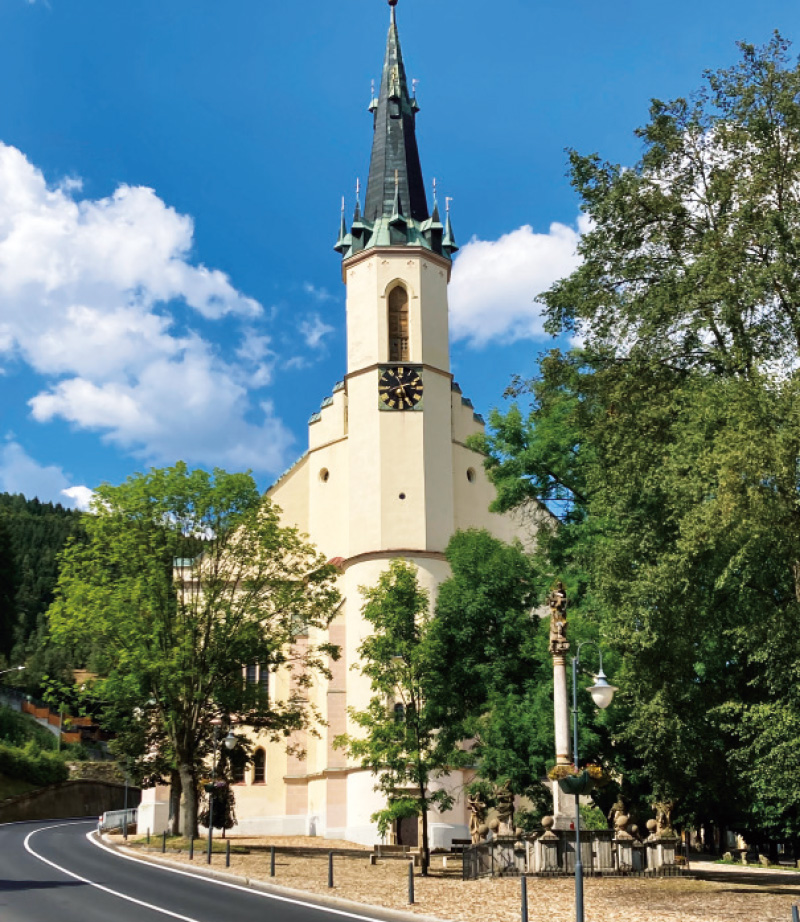
Fig. 2. Late Gothic Church of St. Joachim
JÁCHYMOV STREAMS
Fig. 3 shows the newly renovated Astoria spa house; to its left is the Jáchymov Spa Visitor Information Centre, and to the far left is U Vodopádu restaurant, frequented by tourists; adjacent to the rock massif from behind, it offers unique natural nooks and crannies with many water features. The rivers and streams with numerous lakes, pools, and bridges are quite typical for Jáchymov and serve not only for walks by spa guests, but also significantly influence the local beneficial climate of the Ore Mountains foothills (Fig. 4).
Fig. 3. Jáchymov spa centre
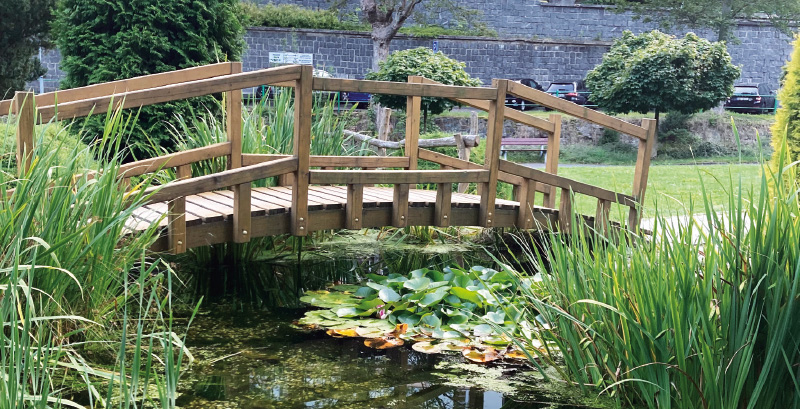
Fig. 4. The spa park with a footbridge over the Jáchymovský stream
Given that Jáchymov is currently a small town covering an area of about 51 km2, where only about 2.400 permanent residents live, it might seem incredible that a total of four streams converge in such a small area. Moreover, it is said that our great-great…grandfathers from the times of the 2nd Military Mapping were confused by the German names of the local streams, so they simply labelled individual tributaries alphabetically (e.g. Weseritz A and Weseritz B) in the sense of “something flows here, but no one knows what it is called” and did not bother with it any further.
In any case, today we know that the main watercourse of Jáchymov is the Jáchymovský stream (Fig. 5) flowing throughout the town and often also under its surface. This is probably one of the main reasons why the spa park maintains a pleasantly humid climate even in the height of summer and its vegetation thrives so well (Fig. 6). In the spa centre, (1) Klínovecký stream flows into Jáchymovský stream; as is already clear from its name Klínovecký stream originates on the slopes of Klínovec and merges with the second local tributary, (2) Veseřice, roughly below the bottom cable car station. A tributary of the Klínovecký stream is (3) Stísněný stream, which rises in the bogs near Boží Dar. The last local stream is called (4) Suchá and flows into Jáchymovský stream in the Valley of Mills. Jáchymov stream, enhanced by all these tributaries, then continues through a picturesque valley to Ostrov, where it flows into the Bystřice river.
Fig. 5. Jáchymovský stream
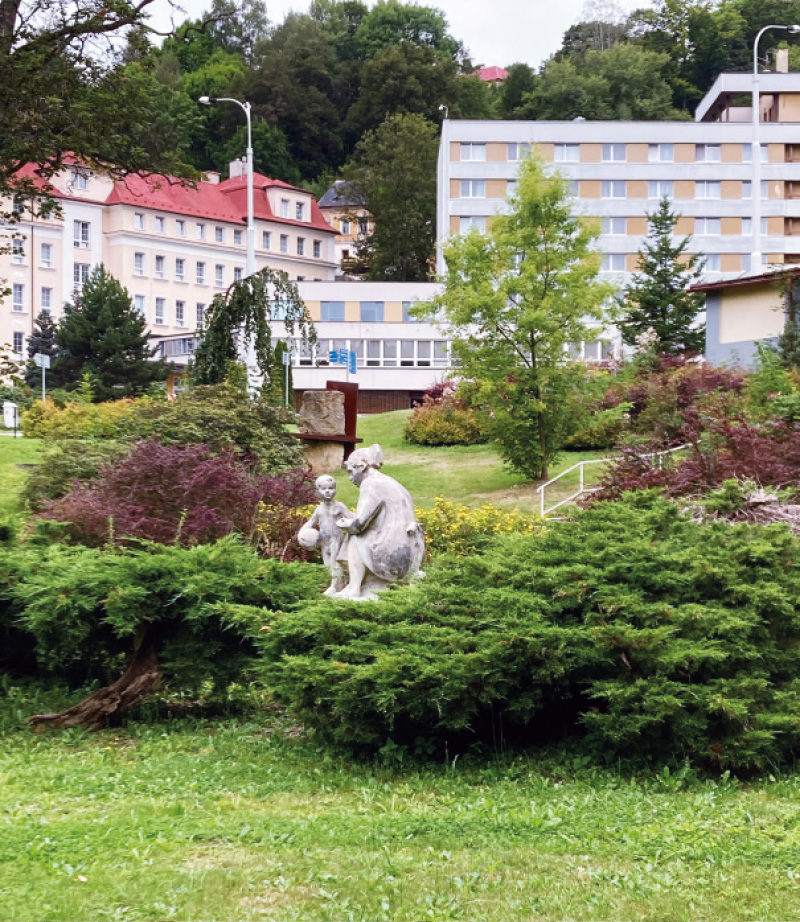
Fig. 6. Spa park
FOLLOWING THE MILLS
Jáchymov is nestled in the middle of forests, and thus invites to walks and trips. There are many walking trails, well-marked according to length and level of difficulty, so there is something for everybody. Of the more interesting ones, it is worth mentioning the local nature trail About Radon and the nature trail Jáchymov Hell. Their focus is certainly evident from their names (Author’s note: you can read more about radon treatment and Svornost mine in one of the next VTEI issues).
VALLEY OF MILLS
There are two tourist trails that start directly in the spa centre of Jáchymov and lead through the beautiful valley of Jáchymovský stream, depending on the level of difficulty. The shorter and easier one is called the Valley of Mills (Údolí mlýnků) and leads from the entrance to the largest spa building, Radium Palace, towards the local sports centre with its tennis courts, and continues along a forest path for about one kilometre to the stream (Fig. 7). It is lined with about 60 hand-made mills of various ages, from top to bottom – some are wooden, others metal or plastic (Fig. 8). Sometimes the mills even depict specific local objects, such as the Chapel of St. Anne or the mining tower of Svornost mine.
Fig. 7. A forest path invites to relaxing activities
Fig. 8. The Walley of Mills is a Jáchymov rarity
Apart from the spa guests, the trail is especially popular with families with children. The sight of young parents taking hammers, screwdrivers, and other tools out of their backpacks to repair a broken mill or make a new one is typical here, and very refreshing.
MILL TRAIL
The second trail also starts at the tennis courts, but is more time consuming and physically demanding. It is called the Mill Trail (Mlýnská stezka, sometimes also Severin’s Promenade; Fig. 9) and leads through the picturesque Mill Valley between Jáchymov and Ostrov (Author’s note: also known as Ostrov nad Ohří). This area served as a manufacturing base for the town of Jáchymov from the time immemorial. The trail’s name is related to the mill development along Jáchymovský stream. The first important period of this area was, as already mentioned, the 16th with its silver mining; the spread of water wheels significantly contributed to increasing the efficiency of various manufacturing processes, such as papermaking. The second glorious era came in the 19th century thanks to the rise of industry, the widespread use of electricity, and the invention of water turbines.
Fig. 9. The Mill Trail offers beautiful forest nooks and views of the surrounding landscape
This romantic forest path, leading along a cascade of historical waterworks, used to have the German name Roseggerweg; it then almost fell into oblivion. It was only in the last hundred years, thanks to the development of spa tourism in the area, that the trail was revived. The modern projects “Land of Living Waters I” and “Land of Living Waters II”, implemented by the civic association “Local Action Groups of the Ore Mountains West”, also contributed significantly to this. Their main goal was to actively involve residents in the restoration of nature trails and all the water facilities – water wheels and mills, mineral springs, streams, wells – as part of rural development and the restoration of cultural and natural heritage, which would significantly increase the quality of the environment and the attractiveness of rural areas, and thus support the economic situation of this region.
The Mill Trail has become a very popular tourist route, with many resting places. These include Moučný Mill and Panský Mill (both on the site of today’s Radium Palace Hotel), Maderův Mill, which, in addition to flour milling, also had the privilege of brewing beer, the Drainage Tunnel, which still drains water from Jáchymov mines, and Petterův/Petrův Mill, once the most productive of all the mills in the area. Its establishment dates back to 1532 and, in addition to traditional milling activities, it also housed a sawmill. It also had a beer brewing privilege. It is the oldest preserved water mill in the Czech Republic; the remains of its historical masonry and the mill drive can still be found in the forest. Other mills on the route included Horní Speknerův (originally an iron hammer mill, then a grain mill and later a sawmill; today the new owner is fighting to save it, having built a small hydroelectric power plant here), Trinksův Mill (also known as Upper Paper Mill), on whose site U Vlčků restaurant currently stands, and Blahův Mill (Lower Paper Mill), which operated until the mid-20th century. Nowadays, it serves as a guesthouse. The last mill on the right bank of Jáchymovský stream was Dolní Speknerův Mill, just before the village of Horní Žďár (Author’s note: now part of the town of Ostrov). It originally served as an iron hammer mill, later as a grain mill. From 1919, it was used for electricity production. There are three more resting places before the very centre of Ostrov: the Farm, which used a water wheel to power the threshing machine, the U Václava Mill, which from 1901 also housed a bakery and U Václava Inn, and finally the U Semeráda Mill, also called the Flour Mill, because flour was ground here and traditional dark bread was baked.
OSTROV
The Mill Trail with all its resting places leads to Ostrov, a town just ten kilometres from Karlovy Vary. Ostrov is approximately the same size as Jáchymov, but has many times more inhabitants (around 16,000). It lies on the Bystřice river (Fig. 10), into which the Jáchymovský stream flows. The town settlement is documented from the beginning of the 13th century, when it was already a prosperous town. Today Ostrov offers many historical monuments, but also cultural, social, and sporting activities.
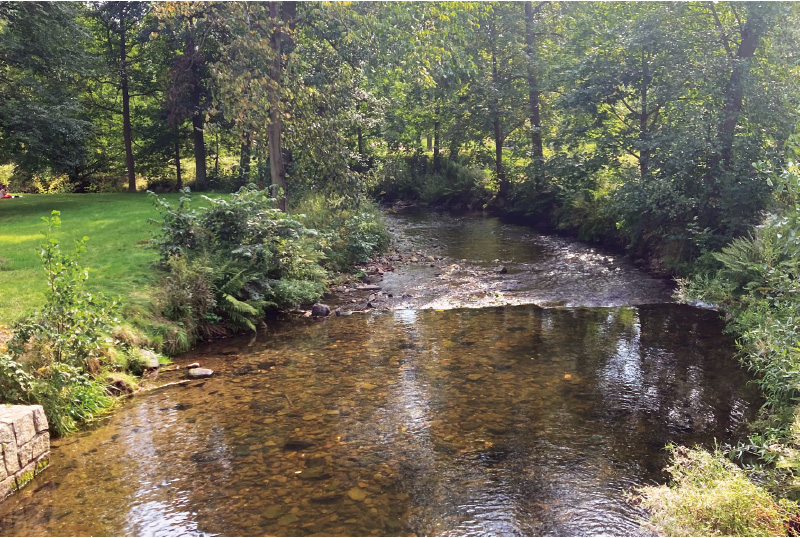
Fig. 10. The Bystřice river in Ostrov
THE CHATEAU AND THE “EIGHTH WONDER OF THE WORLD”
Probably the most significant and interesting monument of Ostrov is the chateau (Fig. 11), built on the foundations of the original medieval castle. It is a large chateau complex consisting of several buildings and surrounded by an impressive garden (Figs. 12, 13). Its original form was shaped in the spirit of Mannerism, then Baroque and the High Baroque. Over time, the most important engineers, surveyors, and builders participated in its creation. Some of their plans are still available today in the exhibition in the chateau building. The chateau garden is crossed by the Bystřice river; from the very beginning, plans were primarily made for its use and distribution of its water throughout the complex (Fig. 14). Therefore, both parts of the garden were equipped with various water features – fountains and spouts, water bodies with sculptures, a maze, a garden theatre, ponds with swans, and an extensive system of canals, along which it was possible to float in boats. The chateau garden was therefore ever since the 17th century referred to as the “eighth wonder of the world”, so it is no surprise that it became the model for many gardens of noble residences in Europe, for example in France, Italy, Austria, and the Netherlands. During its heyday, one of the owners of the estate was the aforementioned Count Stephan Schlick (Štěpán Šlik), founder of Jáchymov. However, after his death in 1526 in the battle against the Turks at Mohács, the wealthy Šlik family continued to operate here.
Fig. 11. The Ostrov chateau
Fig. 12. The chateau garden gate
Fig. 13. The chateau summer pavilion was originally surrounded by lakes with swans
Fig. 14. One of the plans for water distribution in the chateau garden (1799)
The Ostrov chateau is still the pride of the West Bohemian region, and its architecture and the freely accessible chateau garden with a beautiful park layout (Fig. 15), is a model of very successful maintenance and preservation of natural heritage in a town centre.
Fig. 15. The chateau garden today (August 2024)
Photos pp. 50–53: Z. Řehořová
Acknowledgements
I would like to thank the staff of Jáchymov Spa Visitor Information Centre, without whom my stay in Jáchymov would not have been so full of activities and my trips around the area would not have been so safe and informative. I would also like to thank the staff of the castle information centre in Ostrov for their explanations of all the permanent and temporary exhibitions.
An informative article that is not subject to peer review.
